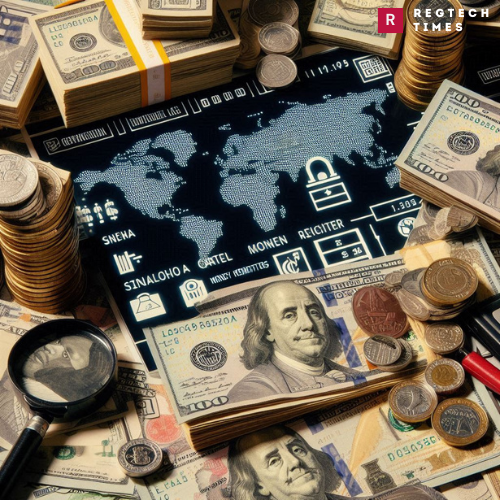In a dramatic revelation, U.S. prosecutors have unveiled a multi-year investigation exposing a complex alliance between the notorious Sinaloa Cartel and an underground Chinese banking group in Southern California. This partnership facilitated the laundering of over $50 million in drug trafficking proceeds, highlighting the sophisticated methods employed by international criminal networks to obscure the origins of their illicit profits.
A Sophisticated Alliance Between the Sinaloa Cartel and Chinese Bankers
The Sinaloa Cartel, long recognized as one of the most powerful drug trafficking organizations globally, reportedly conspired with a clandestine money-transmitting group linked to Chinese nationals. The U.S. Department of Justice (DOJ) detailed these allegations in a 10-count superseding indictment that outlined how the cartel and the underground banking group coordinated to launder vast sums of drug money. This operation, conducted primarily in the Los Angeles area, showcased the cartel’s relentless pursuit of profit through illegal means.
Unveiling Operation Fortune Runner
The investigation, Operation Fortune Runner, was a joint effort that involved U.S. officials as well as law enforcement agencies from China and Mexico. This extensive probe uncovered that the Sinaloa Cartel imported substantial quantities of narcotics into the United States between October 2019 and October 2023. These activities generated substantial amounts of cash, which were subsequently processed by a money-transmitting group based in the San Gabriel Valley with connections to Chinese underground banking systems.
Federal prosecutors allege that Edgar Joel Martinez-Reyes, a 45-year-old from East Los Angeles, played a central role in this scheme. Martinez-Reyes is alleged to have traveled to Mexico in January 2021 to negotiate with Sinaloa Cartel members and set up an agreement with money remitters connected to Chinese underground banking. Following this agreement, the cartel distributed cocaine, methamphetamine, and other narcotics through its network.
Methods of Money Laundering Used by the Sinaloa Cartel
The cartel and the Chinese underground network utilized various methods to launder the proceeds from drug sales. This included delivering large amounts of U.S. currency to members of the Chinese group, who then laundered the money for a fee. Prosecutors highlighted that the money remitters possessed significant sums of U.S. currency, enabling wealthy Chinese nationals to evade China’s strict currency controls, which limit the amount of money individuals can transfer out of the country annually.
The remitting organizations dispose of the drug profits by delivering the currency to their customers or by purchasing real or personal property. Additionally, drug proceeds were moved through cryptocurrency transactions and other methods such as cashier’s checks and small deposits into bank accounts, further complicating the trail for law enforcement.
Significant Seizures and Arrests
As part of the investigation, law enforcement seized approximately $5 million in drug proceeds, including 302 pounds of cocaine, 92 pounds of methamphetamine, 3,000 ecstasy pills, three semi-automatic rifles with high-capacity magazines, and eight semi-automatic handguns. These seizures highlight the scale and seriousness of the criminal operations involved.
The DOJ charged two dozen individuals with crimes including conspiracy to aid and abet the distribution of cocaine and methamphetamine, conspiracy to launder monetary instruments, and conspiracy to operate an unlicensed money-transmitting business. Twenty of these individuals are expected to be arraigned in the coming weeks, with one having already been arraigned.
Implications and Global Efforts
The revelation of this sophisticated money laundering scheme highlights the international nature of modern drug trafficking operations. The Sinaloa Cartel’s activities have significantly contributed to the massive influx of fentanyl and other narcotics into the United States, exacerbating the country’s drug crisis and resulting in numerous overdose deaths.
Chinese underground money laundering groups provide crucial assistance to drug cartels by offering a ready market for U.S. currency, aiding in the transfer of illicit profits back to Mexico. This symbiotic relationship benefits both the cartels, who need to launder large amounts of cash, and Chinese nationals looking to circumvent capital flight restrictions.
The success of “Operation Fortune Runner” demonstrates the critical importance of international cooperation in combating drug trafficking and money laundering. The coordinated efforts of U.S., Chinese, and Mexican authorities were pivotal in dismantling this complex network. As law enforcement agencies continue to adapt to the evolving tactics of criminal organizations, such operations will be crucial in mitigating the impact of drug trafficking on public safety and financial systems globally.


